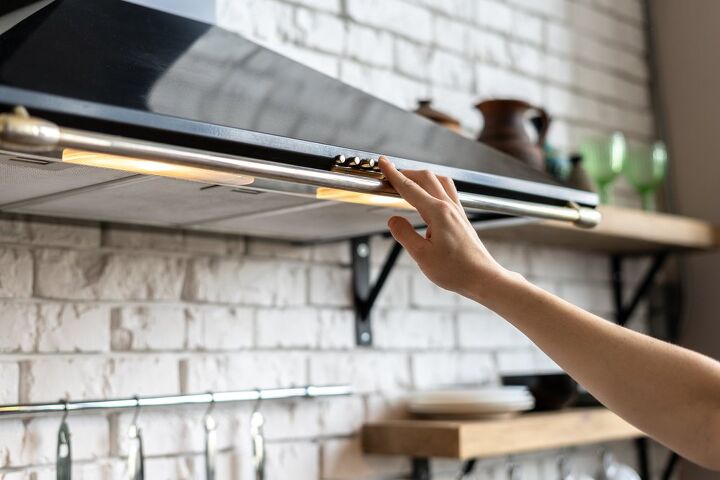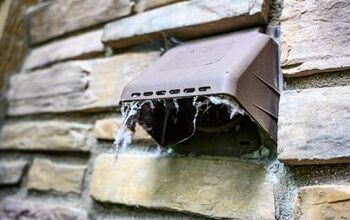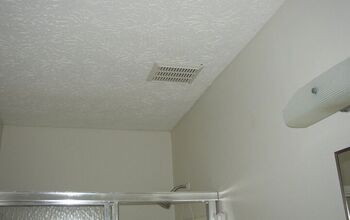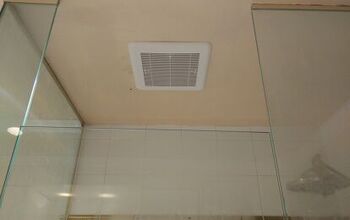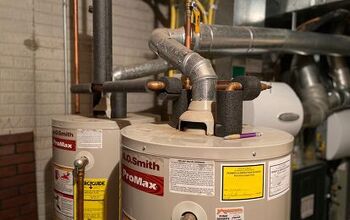Can You Vent A Range Hood Into The Attic? (Find Out Now!)

Kitchen remodels and upgrades are some of the best ways homeowners can add value to their homes. Most experts agree that a kitchen remodel will return sixty to eighty percent of the remodel cost to the home’s value. One question that invariably arises is, can I vent a new range hood into the attic?
Range hoods should never be vented directly into an attic space. The hot air pulled from directly above a cookstove is usually filled with moisture, oils and greases, and other compounds. These contaminants are left behind as the heated air cools in the attic space. These contaminants can lead to mold, a build-up of grease residue, and odors.
In most places, local building codes forbid venting anything directly into the attic. All vents should extend through the roof and have a weather cap. A range hood may vent to an outside wall in some cases, but this is uncommon in most homes.
Do You Need Ducts or Vents Installation or Replacement?
Get free, zero-commitment quotes from pro contractors near you.

What’s Bad About Kitchen Smoke and Cooking?
Think about what you are putting into your attic space if you terminate your range hood vent in the attic. Some of the more common things that your range hood vent draws away from your cookstove include:
- In the case of gas cookstoves, the air above the cookstove has high concentrations of carbon dioxide, carbon monoxide, and other combustion products.
- Even electric cookstoves produce some of these compounds during the cooking process or burning small amounts of food on the electric burners.
- During cooking, the heated air above a cookstove is laden with grease and oil particles, particularly when frying.
- Some cooking styles generate a lot of moist hot air. If you routinely boil food such as making soups, the moisture content of the air as well as the total particulates in the air goes up.
Cooking creates hot air that is laden with contaminants that are bad for you and bad for the health of your home. Eventually, all these contaminants will settle out or condense somewhere if you don’t properly vent the air away in your home.
Why Your Attic is Not a Good Place to Vent a Range Hood
Your attic is a semi-enclosed space. An attic has very little air movement or air flow in and out of the space in most cases. If you vent your range hood into this space, most of the vented air stays in the attic space. What happens next is the problem.
The hot air from your range hood is laden with moisture, greases, oils, and other particulate contaminants. In the attic space, this heated air begins to cool. As the air cools, the contaminants begin to condense out of the air. The condensed particles must go somewhere, and that somewhere is your attic.
Eventually, the moisture ends up in your attic insulation and collecting on the wood framing of your roof. The greases and oils do the same thing, and eventually, the surfaces of your attic spaces become coated with these materials. The other contaminants, many of which are responsible for the cooking odors you can smell, also find their way into your attic space, where they linger.
Creating an Environment for Trouble
As these contaminants continue to collect in your attic space, they start to create an environment that causes many problems. Among these problems are:
- Moisture – Moisture and attics don’t work well together. Most attics have a deep layer of insulation that can attract moisture like a sponge. Unfortunately, wet insulation loses much of its insulating value. High moisture levels also increase the chances for mold growth and mildew in your attic. Neither of these is welcome guests in your home.
- Grease and Oil – As they cool, the suspended grease and oils you use when cooking ends up on the surfaces of your attic. You know how well grease and oil end up on your cabinet doors and frames. The same thing happens in your attic, where you can’t regularly clean. These greases and oils eventually attract all sorts of pests such as roaches, mice, and rats.
- Other Particulates – Many of the odors associated with cooking come from particulate matter suspended in the air. These particulates come from the food you are cooking and, like grease and oil, eventually end up condensing out. If this happens in the attic, the odors can persist and eventually find their way back into your home during wet weather.
Venting your range hood directly into the attic sounds like an economical installation upfront. In the long run, you are creating more expensive problems down the road. The cost of extending that vent through the roof is certainly much less than removing contaminated or moldy insulation from your attic, restoring any damage, and replacing the insulation.
What is the Best Way to Vent a Range Hood Through the Roof?
In general, venting a new range hood through the roof is not difficult. Installing the ductwork and the roof cap will involve a trip into the attic and then up on the roof. However, by following a few simple steps, almost any homeowner can accomplish a roof vent project.
Step 1: Get Everything Together
Before you start your installation project, gather everything you need for the project. Having everything, including tools and materials, together at the beginning prevents delay and frustration as the project moves forward. In general, you will need these tools and parts.
- Your new range hood and the appropriate ductwork and fittings to extend through your cabinets, the attic, and the roof.
- Aluminized metal duct tape
- A properly sized roof cap
- A jigsaw or Sawzall, a drill and bits, and tape measure
- Screwdrivers
- Roofing cement or roofing asphalt
Some installations may require additional tools or parts.
Step 2: Locate your Range Hood
Find the location where you want to install your range hood and mark the appropriate openings. Consult the directions that came with your range hood for detailed instructions on supporting your range hood.
Mark the openings for the ductwork according to the range hood manufacturer’s instructions
Step 3: Cut the Opening
Use your jigsaw or Sawzall to cut the opening in the ceiling for the ductwork. In some cases, this opening may be inside the cabinet over your cookstove. Take care not to cut any supporting ceiling joists. If your range hood interferes with a ceiling joist, you should consult with a seasoned carpenter for a solution.
Step 4 Locate and Mark the Roof Opening
This step requires you to go up in your attic and locate the opening in the ceiling where the ductwork will enter the attic. Using a string and weight, locate the spot on the underside of the roof directly above the opening. This spot is where your ductwork will exit the house through the roof.
Use your drill with a small drill bit and drill a hole where you marked upwards through the roof at the spot. Leave the drill bit in the hole so you can locate the spot easily.
Step 5: Upon the Rooftop
Head up to the roof and find the drill bit sticking through the roof. Follow the directions that came with your roof cap to install the roof cap on the roof. At this point, you must cut a hole through the roofing and the roof deck, removing a few shingles, and replacing the shingles. The roofing asphalt or cement will make this job much easier and waterproof
Step 6: Connect the Ductwork
Back in the attic, it is time to connect the ductwork from the range hood to the roof cap. If possible, avoid using any elbows. A straight ductwork run from the vent to the roof cap is best. If you must make a turn, keep the radius as short as possible. We suggest using rigid ductwork instead of flexible duct. Flexible duct has a short working life, while rigid ductwork typically has a long working lifespan.
Do You Need Ducts or Vents Installation or Replacement?
Get free, zero-commitment quotes from pro contractors near you.

Putting the Contaminated Kitchen Air Where It Belongs – Outside
You should never terminate any exhaust into your attic. Many building codes forbid this practice, and common sense tells us that it is a bad idea. Installing a roof vent with a proper roof cap is not a difficult or expensive project. That contaminated kitchen air needs to go where it belongs.

Dennis is a retired firefighter with an extensive background in construction, home improvement, and remodeling. He worked in the trades part-time while serving as an active firefighter. On his retirement, he started a remodeling and home repair business, which he ran for several years.
More by Dennis Howard



